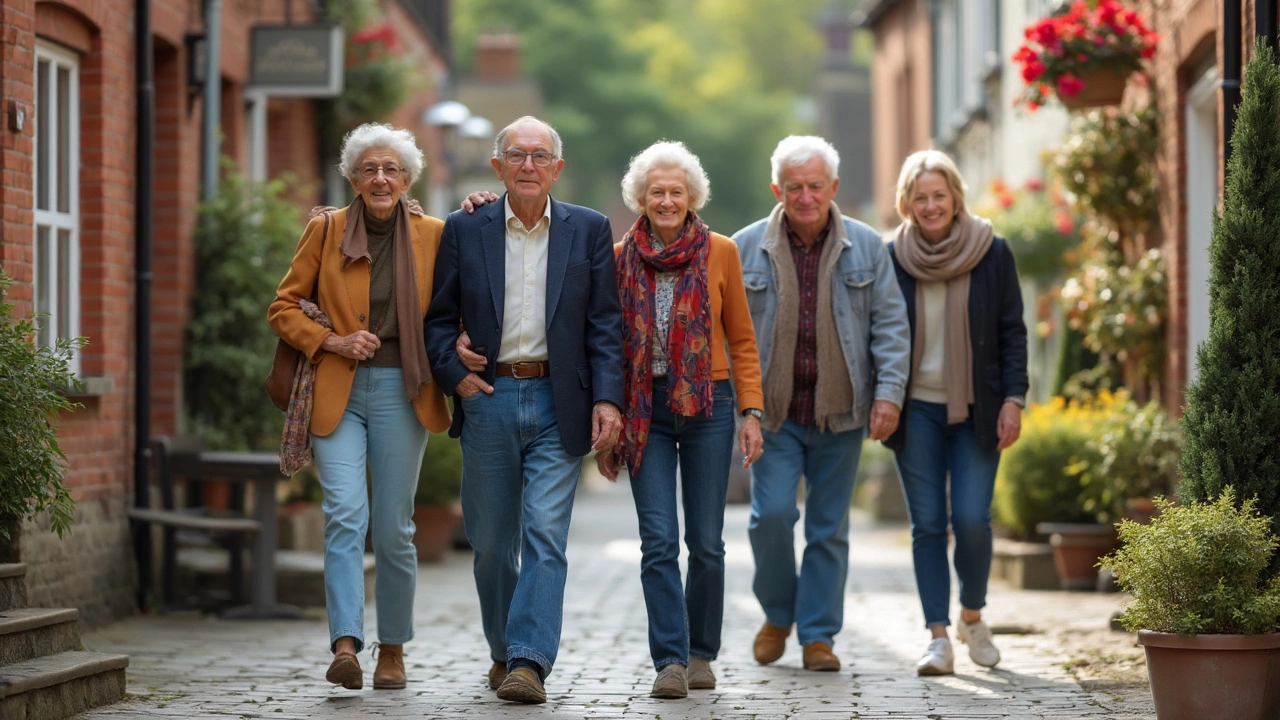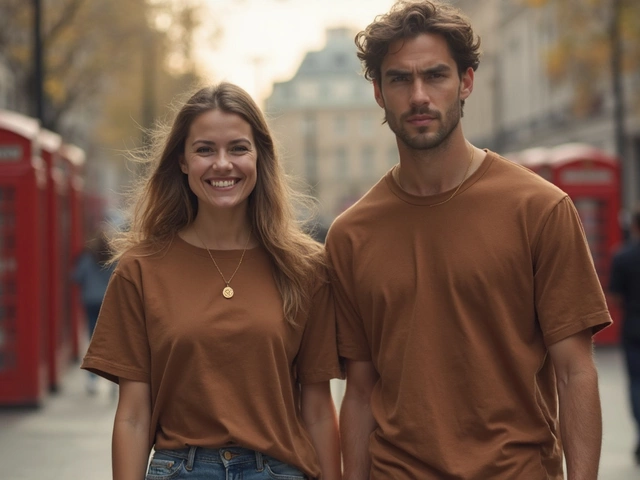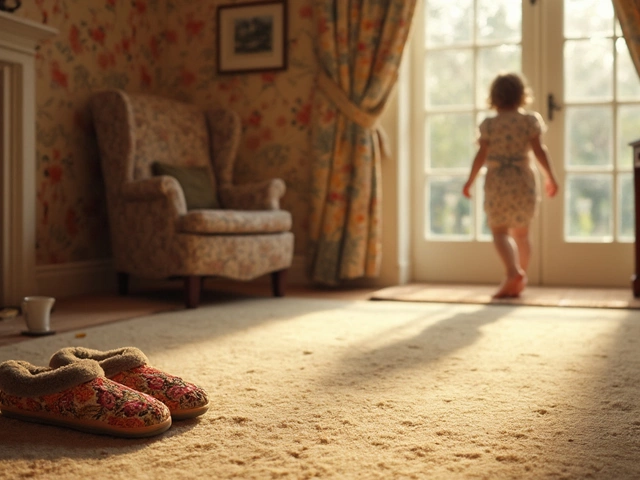Is 70 Too Old for Jeans? Ageless Denim Style Tips

- Cleo Fairchild
- 25 May 2025
- 0 Comments
Jeans aren’t just for twenty-somethings or people with runway bodies. If you’re over 70 and still wondering if you should wear jeans, you’re not alone, but honestly, nobody’s too old for denim. The real question isn’t your age—it’s how comfortable and confident you feel in them.
Fashion rules have gotten way more relaxed these days—nobody’s getting side-eyed for wearing jeans at 70, 80, or even 90. A recent survey from AARP showed that people past retirement age buy jeans almost as often as people in their forties. It’s not surprising, since jeans adapt to all sorts of bodies and styles. They’re basically the sweatpants of structured clothing, just with more pocket space and better style points.
If your hesitation is about fit or shape, you’re ahead of the curve—jeans are more size-inclusive now than ever. Stretch denim, high-waist cuts, and softer fabrics make jeans comfortable for all-day wear, even if your body’s changed over the years. The key is finding a pair that moves with you and feels like you, not squeezing into something because it’s "classic" or on trend. And hey—choosing the right jeans has nothing to do with age, but everything to do with comfort and personal style.
- Why Age and Jeans Have Nothing to Do With Each Other
- Fit, Comfort, and Confidence: The Real Game Changers
- Mistakes to Avoid (and How to Fix Them)
- Easy Tips for Making Jeans Work at Any Age
Why Age and Jeans Have Nothing to Do With Each Other
If you think there’s an age limit on jeans, you might be surprised—there isn’t. The idea that there’s a “cutoff” number for rocking denim is just another old rule nobody really follows anymore. Just look at real stats: People over 65 are huge fans of denim. In a 2023 retail report, over 58% of American shoppers aged 65–80 said they wore jeans several times a week. That’s not a fashion trend—it’s a lifestyle choice.
Jeans have always been about comfort, durability, and, honestly, doing your own thing. They started out as tough workwear almost 150 years ago, and they’ve stuck around because they fit all kinds of people at every stage of life. Jeans don’t judge body types or birthdays. They can look modern, classic, or totally low-key—you get to decide.
| Age Group | Percent Who Wear Jeans Weekly (2023) |
|---|---|
| 18–29 | 76% |
| 30–49 | 65% |
| 50–64 | 62% |
| 65–80 | 58% |
If you’re still hearing that jeans are just for the young, look to celebrities like Helen Mirren or Samuel L. Jackson, who proudly sport denim on and off the red carpet. Regular folks, too, aren’t pausing their favorite pants just because they retire. Why should they?
The real deal is, comfort and a sense of style should guide your clothes—not the date on your driver’s license. Jeans are just one more way to say you’re living in the present, being practical, and keeping it true to yourself, which, let’s be real, never goes out of style.
Fit, Comfort, and Confidence: The Real Game Changers
This is where most people over 70 get stuck—how do you find jeans that don’t feel like you’re cramming yourself into your teenager years? Forget trends for a second and focus on these three things: fit, comfort, and confidence.
Fit is everything. Today’s jeans come in a huge range of cuts: straight leg, relaxed, bootcut, and more. High-rise options give extra support around the midsection, which lots of older adults prefer. Look for brands with "curvy" or "relaxed" fit labels—they’re made to sit better on bodies that aren’t shaped like mannequins. In 2023, Levi’s reported a 27% increase in sales of their relaxed and high-waist jeans for shoppers age 60 and up, proving the shift toward comfort-driven fashion.
Let’s talk comfort. Cotton blends with a bit of spandex or elastane make jeans way more forgiving. If you sit a lot during the day or want jeans for travel, these fabrics flex with you. Also, lighter-weight denim isn’t stiff, and feels better for all-day wear.
Here’s a quick cheat sheet for picking jeans that work for your body and life:
- Grab jeans with at least 2-5% elastane—they stretch but hold shape.
- Go for a mid or high waist; nobody wants a waistband digging in.
- Try on multiple brands—sizes aren’t standard, and one store’s "medium" is another’s "large."
- Skip jeans with too much distressing or embellishment, if you want a timeless look or easier styling.
- Consider pull-on or elastic waist jeans if zippers and buttons feel like a hassle. They look like regular denim but are way easier to wear.
Confidence is underrated. Ever notice how people who feel good in their clothes just look better? A study by the International Journal of Fashion Design (2020) showed that folks, regardless of age, felt more positive about going out and socializing when they wore clothes that matched their comfort level. Jeans included.
Here’s a quick look at some comfort features found in jeans today:
| Feature | Why It Matters |
|---|---|
| Stretch Denim | Moves and bends with your body |
| Soft Waistbands | Less digging, more comfort |
| Lighter Fabric | Keeps things breathable all day |
| Pull-On Styles | No buttons or zippers to mess with |
Chasing after perfect isn’t the goal. Prioritize fit and comfort, and the confidence will follow—no matter your age.

Mistakes to Avoid (and How to Fix Them)
Even if you love wearing jeans, it’s easy to run into a few classic problems. Most folks over 70 run into the same handful of issues—bad fit, uncomfortable waistbands, denim that’s too stiff, or jeans that just don’t feel age-appropriate. The good news: these are all fixable with a little know-how.
- Wearing the Wrong Fit: Baggy jeans or pants that sag in odd places don’t do anybody favors. At the other extreme, super-tight jeans can actually be uncomfortable and highlight spots you’d rather not show off. Try slim-straight or relaxed fit—they’re way more forgiving and flattering for most body types.
- No Stretch, All Stiff: Stiff, heavy denim can feel like cardboard, especially if you have sensitive skin or arthritis. Go for jeans with 2% to 4% spandex or elastane—these move better and don’t dig in.
- Ignoring Waistband Comfort: Waistbands that press or pinch are a deal-breaker. Look for higher rises and flexible waist styles. There are even jeans with soft, hidden elastic bands that look like regular jeans from the outside.
- Too Trendy or Too Dated: Wild rips, super low cuts, or bedazzling can look a bit out of place if that’s not your thing—but, on the other hand, super old-school ‘mom jeans’ from the 90s might feel frumpy. Aim for classic washes and clean lines for maximum wearability.
- Color Blind Spots: Light washes and faded colors can really show stains or wear, while jet-black denim sometimes looks too formal. Try a classic dark blue—it works for most occasions and flatters every skin tone.
If you want to know what other people your age are doing, check this out:
| Common Jean Issue | % of People 70+ Reporting This | Best Fix |
|---|---|---|
| Poor Fit | 62% | Try relaxed or straight cuts, skip skinny jeans |
| Uncomfortable Waistband | 47% | Look for elastic or pull-on waist styles |
| Denim Too Stiff | 33% | Pick jeans with stretch (2-4% spandex) |
| Style Looks Outdated | 28% | Choose mid-rise, dark-wash, simple styles |
If something isn’t working, it’s probably the jeans—not you. Don’t be afraid to try a few brands or even shop in the men’s section if the fit works better for you. And if you can, bring a friend to give an honest opinion—sometimes we’re our own harshest critics when it comes to jeans.
Easy Tips for Making Jeans Work at Any Age
Making jeans fit into your wardrobe after 70 is mostly about smart choices that work for you, not against you. Forget outdated style rules—you’ve earned comfort and confidence, and jeans can give you both.
- jeans with stretch are your best friend. Look for at least 1-2% elastane or spandex in the fabric label. This small amount makes jeans way more forgiving if your waistline or legs aren’t quite what they used to be.
- Skip ultra-low rises. Mid-rise or high-rise cuts do a better job of smoothing everything out and are much easier to move in. Plus, you won’t have to deal with that annoying “jeans gap” at the back when you sit down.
- Go for darker washes. Navy or black denim looks sharp and modern, but it also tends to slim and match pretty much every top in your closet. Lighter washes can work, too, but dark just feels a bit dressier if you want to wear them out for dinner.
- Choose the right length. Ankle-length jeans or styles you can cuff mean fewer trips to the tailor and less fabric bunching around your shoes. If hemming is needed, most dry cleaners can handle denim for less than $20.
- Don’t ignore your shoes. Jeans are flexible, but the wrong shoes can throw off the whole look. If you like sneakers, stick to clean, classic styles. Loafers, ankle boots, or simple slip-ons can polish up the outfit without any extra fuss.
- Make sure you can sit, stand, and walk comfortably in your jeans before buying. There’s no point in grabbing something that looks great but feels tight or pinchy after an hour. Some stores, like Levi’s and J.Jill, have even started offering "try-on at home" options, so you don’t have to feel rushed in the dressing room.
- Watch out for tricky details—rhinestones, fringe, or heavy distressing can date your look fast. Simple is always in style.
Last tip: Don’t let the number on the tag mess with your head. Sizing changes by brand (even within the same store!), so trust the mirror, not the label. Your 70s can be your most confident and best-dressed years yet—jeans just make it easier.


